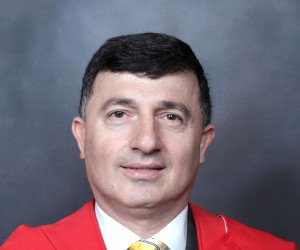There are few fields of product development in the mining sector that have evolved quite as fast as mine planning software, a fact that led Wits University School of Mining Engineering lecturer Dr Bekir Genc to conduct his PhD on the topic.
In particular, Dr Genc was interested in which software was, in practice, most relevant to each of the functions carried out by software developers and mine planners. His research, which earned him his doctorate from Wits earlier this year, now helps software users to make better decisions when purchasing new software or planning to upgrade the tools of their trade.
“Although the software companies are trying to feature as much functionality as possible, in many cases the software that is being purchased by the mining company is not adequate for the intended purpose,” said Dr Genc. “Every piece of software comes with limitations.”
Considering the wide range of applications for mine planning software, this is not difficult to understand. There is barely an aspect of life on the average mine which is not served by one or more specialist software programs, and include the following: mapping; geological data management; geological modelling and resource estimation; mine design and layout; planning and scheduling; financial valuation; and mine optimisation.
“Bearing in mind that each software provider’s product is not compatible with the others, it is difficult for customers who are trying to find a program that addresses their particular needs – without having to acquire too many different products,” he said.
To overcome some of these challenges – faced mainly by mining companies but also by other users such as consultants and educational institutions – software vendors started offering additional modules to the existing software. This, however, tends only to muddy the waters, as it becomes unclear where the core functionality of the software lies, and which features are just ‘add-ons’.
What was required, said Dr Genc, was a “methodology to evaluate mine planning software utilisation to enhance decision-making strategies in South Africa to improve efficiencies within the mining sector.”
Using a database that he populated with data from software providers, the Department of Mineral Resources and consultants, he created a framework to link SA’s main mineral commodities with the core functionality of the software being used. This now allows users to see which software is the most utilised not only for the function for which it is used (for example, geological modelling) but also for the commodity in which the user is engaged (for example, coal or gold mining).
“It is difficult to distinguish the actual reasons behind the acceptance of a particular mine planning software, as most software have similar features, but the relationship between software vendors and customers in the mining industry, as well as after-sales service and customer support play a very important role to decide which software to choose and use,” he said.
One of the key issues, though, is that mining company choices are based mainly on individual user preference – so the choice may change when a new mine planner is employed.
“The staff turnover within the mining industry is historically high, so competent mine planning software users tend to move around quite often,” said Dr Genc. “If the new appointee is not familiar with the existing mine planning software package, the mine may consider purchasing a new mine planning software package which the new appointee is familiar with.”
He said it was also well-known that most mine planning software users prefer using a combination of software to complete their task efficiently – adding to the complexity of his research.
His final study focuses on which software is most utilised in each of six mining functions, and within two commodities – coal and platinum group metals.
“When interpreting the obtained results for the functionality of geological data management in the commodity coal, for instance, we can see that Minex software clearly is the market leader at 61% of mine planning software utilised, followed by Sable Data Warehouse with a 22% market impact,” he said.
His results will also assist mining engineering schools to make a more informed choice of which software they teach students as part of their specialist studies; knowing which software is most widely utilised by future employers now makes it easier to align the content of mining courses with what the student is likely to find in the workplace.
The research also provided a new framework to predict future utilisation of mine planning software. The benefits, he said, are likely to be felt not only by users but by the software companies themselves.
“As mergers and acquisitions will continue re-shaping the mine planning software field in this very competitive market, the mine planning software providers are now also in a position to understand their market impact so that they can develop appropriate decision-making strategies for future growth,” said Dr Genc.






